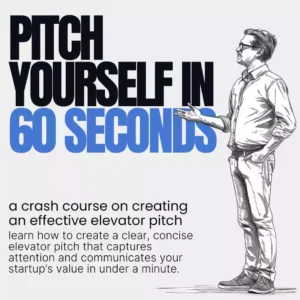TL;DR
Calculating your startup’s Total Addressable Market (TAM) involves defining your Serviceable Addressable Market (SAM) and Service Obtainable Market (SOM), then choosing one of three methods—top-down, bottom-up, or value theory—to estimate potential revenue. Be mindful of challenges and ensure your estimates are realistic by basing them on robust data.
Introduction to Total Addressable Market (TAM)
The Total Addressable Market, or TAM, is a crucial metric for any startup. It represents the maximum revenue opportunity available if your product or service achieved 100% market share. Understanding TAM helps you gauge potential growth and make informed decisions.
The complexity of calculating TAM can be daunting, given market variations and competitor data. Despite the challenges, a systematic approach can simplify the process. This blog post outlines step-by-step methods to help you accurately calculate TAM for your startup.
Step 1: Determine Your Serviceable Addressable Market (SAM)
Before diving into TAM, it’s essential to identify your SAM. The Serviceable Addressable Market is the subset of the total market that is within your reach, considering geographical, industry, and demographic constraints. For instance, if you sell an eco-friendly cleaning product, your SAM would include households and businesses interested in green solutions.
To identify SAM, research your industry and analyze market reports. Filter out markets that are inaccessible due to regulatory or logistical barriers. Consulting industry analyses and reports from credible sources can provide useful insights into your SAM.
A foundational understanding of your SAM ensures you won’t overestimate your potential market size, which can mislead your strategic planning.
Step 2: Calculate Your Service Obtainable Market (SOM)
The Service Obtainable Market (SOM) is a more specific subset of SAM. SOM accounts for market share you can realistically capture, given your competitive environment and resources. This involves analyzing your competitors and positioning within the market.
For example, if you are entering the smartphone market, your SOM includes sales realistically achievable given competitors like Apple and Samsung. Estimating SOM requires a deeper understanding of market dynamics, including consumer preferences and competitor strengths.
By accurately defining your SOM, you make realistic market predictions, leading to better-targeted marketing and sales strategies.
Step 3: Methods to Calculate TAM
Top-down Approach
This method relies on existing industry research to estimate the overall market size. You start with a broad market figure and segment it down to your target area. For example, if the global smartphone market is valued at $500 billion and you focus on a segment worth $50 billion, this forms the basis of your TAM.
Bottom-Up Approach
The bottom-up approach is data-driven and starts with your early sales figures. This method projects market size by scaling your initial sales data. For instance, if your early sales indicate 1,000 units at $50 each, and you project reaching 100,000 units, your TAM is estimated at $5 million.
This approach can be more accurate as it reflects real market responses to your product.
Value Theory
Value theory focuses on how your product or service changes buyer behavior. This method estimates TAM based on the value provided to customers, which can influence market adoption rates. For example, if an innovative medical device reduces hospital stays by half, the TAM would include potential savings for healthcare providers and patients.
This approach is beneficial for disruptive technologies offering significant value improvements.
Applying SAM and SOM Concepts for Accurate TAM Estimation
To refine your TAM calculation, filter the SAM and SOM through reasonable assumptions. SAM should reflect a market segment genuinely accessible to your startup. Similarly, ensure SOM reflects a realistic market share based on robust competitor analysis.
Consider the example of an eco-friendly cleaning product startup. If the SAM includes all households in the U.S., the SOM might adjust for households already loyal to existing brands, giving a clearer picture of obtainable market size.
Ensuring your assumptions are grounded in data will increase the reliability of your TAM estimate, crucial for investor pitches and strategic decisions.
Challenges in Calculating TAM
Defining Your Market
One of the main challenges is accurately defining your market. Markets can be broad or niche, and clear definitions ensure you’re not overestimating your TAM.
Focusing on the Right Customers
Identifying and focusing on your ideal customer profile helps in narrowing down a more accurate SOM. Misidentifying your customer base can lead to skewed TAM estimates.
Understanding Competitors
Competitor analysis is vital as it impacts your market share estimates. Understanding your competitors’ strengths and weaknesses helps refine your SOM.
Identifying Growth Opportunities
Recognizing market growth opportunities ensures your TAM estimates can adapt over time. Industries evolve, and staying abreast of these changes helps in maintaining accurate market projections.
Questions to Consider
- Have I accurately defined my Serviceable Addressable Market (SAM) without overestimating?
- Am I using reliable data sources for my TAM calculations?
- How accurately have I defined my Service Obtainable Market (SOM)?
- Which method (top-down, bottom-up, value theory) best suits my market and product?
- Am I aware of potential market changes that could affect my TAM?
Final Thoughts
Calculating your startup’s Total Addressable Market (TAM) is a delicate but crucial exercise. It requires accuracy and careful consideration of various factors like SAM, SOM, and market methods. By following the outlined steps and ensuring that your assumptions are grounded in robust data, you can derive meaningful insights that inform strategic decisions. Keep refining your estimates as market conditions evolve. This proactive approach will enhance your ability to capture and expand your market share effectively.





